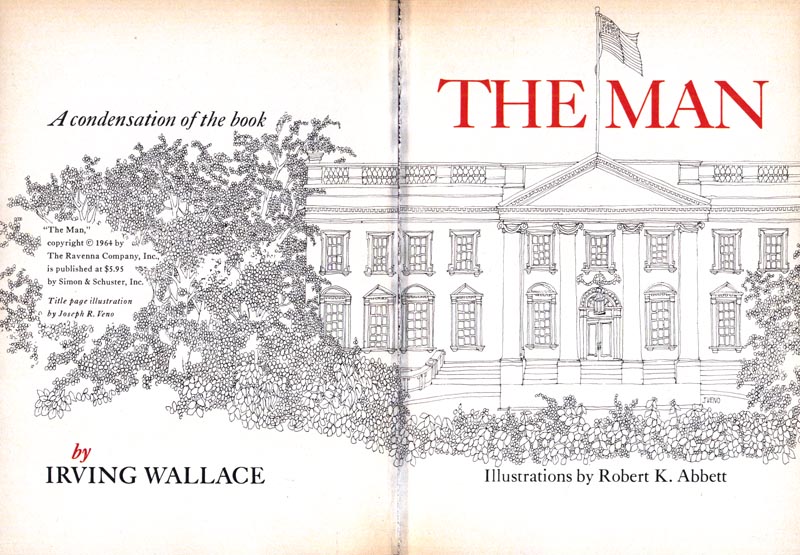
When I discovered this story in a recently acquired volume of Reader's Digest Condensed Books I couldn't resist including it this week. Not only because it just seemed too, too perfect that this should fall into my hands during Black History Month...

... but also because the artist assigned to illustrate this story was one you should definitely know: Bob Abbett.

Born in Hammond, Indiana in 1926, Bob Abbett worked primarily as an illustrator of paperback covers during the mid-century period. In one quote I found he said, "I did cover art for many paperbacks including Ballantine, movie posters and some story illustration for True, Argosy, etc." The gorgeous illustration below is perhaps more typical of the kind of subject matter fans of genre fiction know him for. That piece seems a little out of place in the company of all the other paintings Abbett did for "The Man," but boy is it ever wonderful!
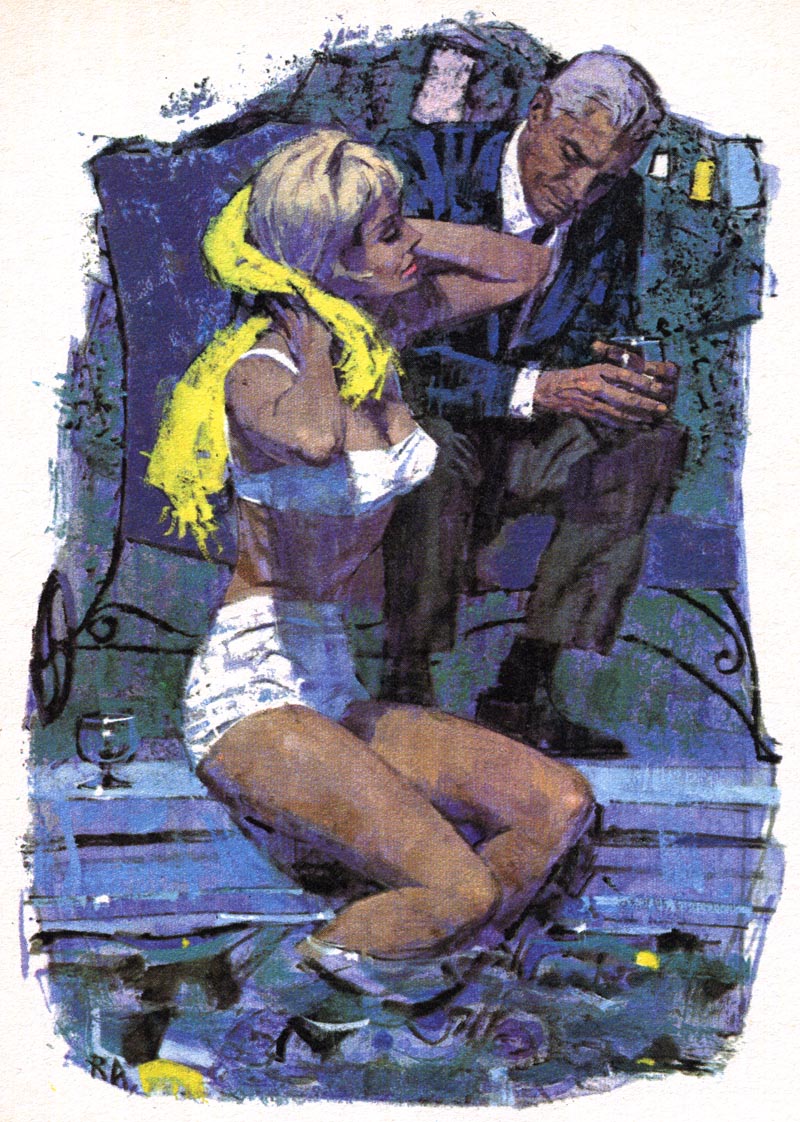
Not to say all of the other pieces in this series aren't magnificent. Bob Abbett really managed to infuse his work with a gloriously rich palette of colours.
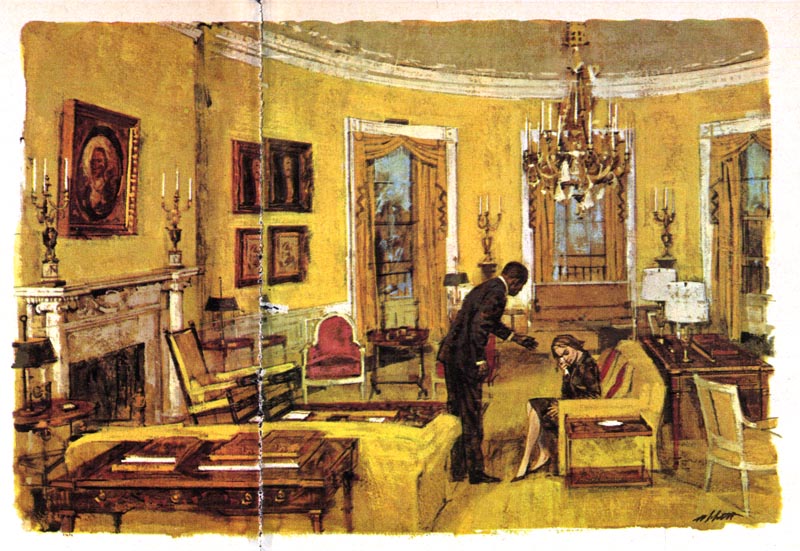
As you scroll through this selection of images, notice how deliberately and effectively he assigned each illustration its own unique colour scheme.

Yet viewed as a group, they all relate to each other in a harmonious manner. It must have been deeply satisfying for the artist when he completed the series and could prop them up in his studio and admire them en masse.
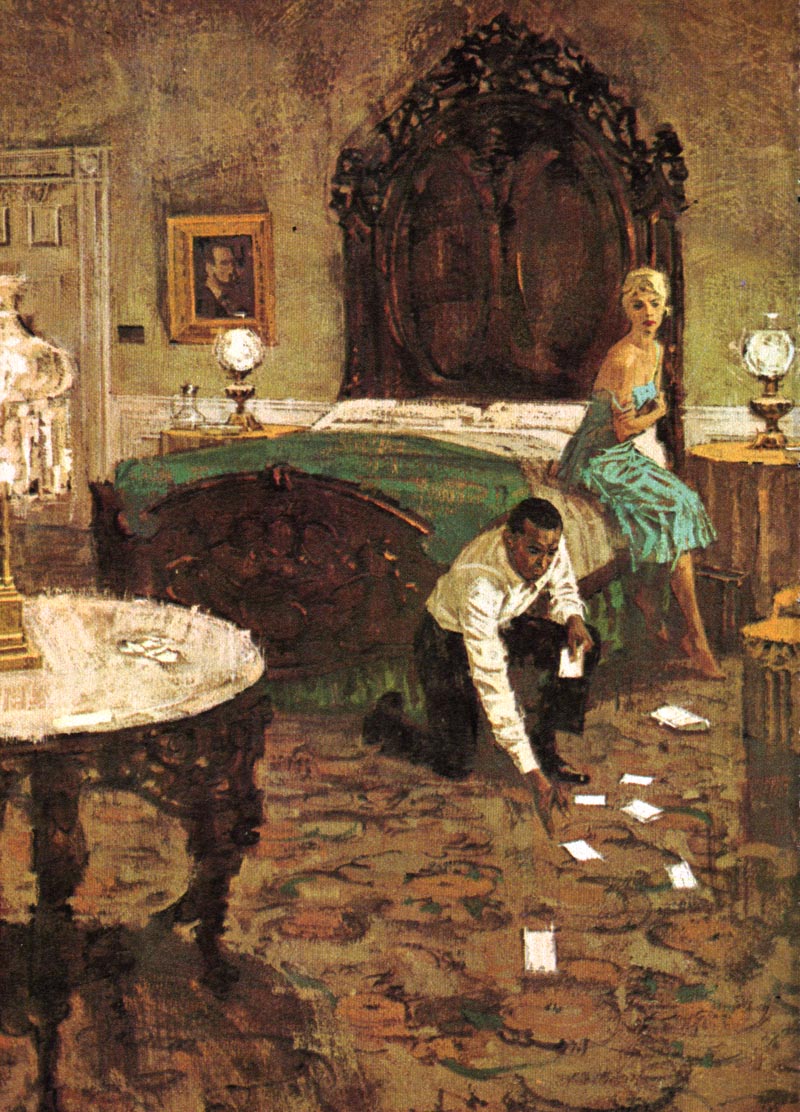
To be honest, I have not seen a lot of Abbett's work and am getting to know him only now myself. But one thing I find really engaging about his technique is how textural his colour is. It almost has the appearance of crumpled paper that was flattened out again, then painted on. The effect is so lively, and Abbett's use of colour so creative, that even an otherwise forbidding scene like the one below seems somehow deliciously inviting. (Go on, click the picture and enjoy the larger view)
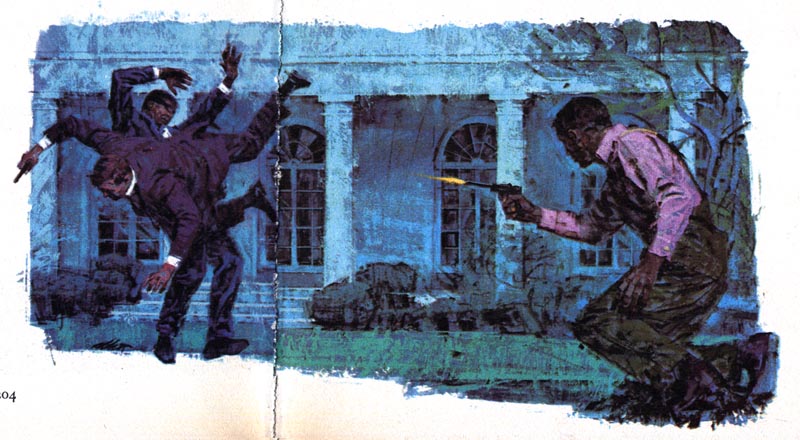
Returning for a moment to the story portrayed... I didn't do much more than skim through bit and pieces of it while scanning Bob Abbett's illustrations, so I'm not in a position to offer an authoritative synopsis. But it did feel very weird to discover this piece of fiction while living at this time in history. What seems so normal in today's world is proposed in "The Man" back in 1964 as a possibility under only the most unbelievable of circumstances...
From the Wikipedia page on "The Man": "the Vice-Presidency is vacant, because of the incumbent's death. Then, while overseas, the President and the Speaker of the House suffer a freak accident; the President is killed, the Speaker of the House dies in surgery. The Presidency then corresponds to Douglass Dilman, the President Pro Tempore of the Senate, a black man earlier elected to that office in deference to racial tokenism."
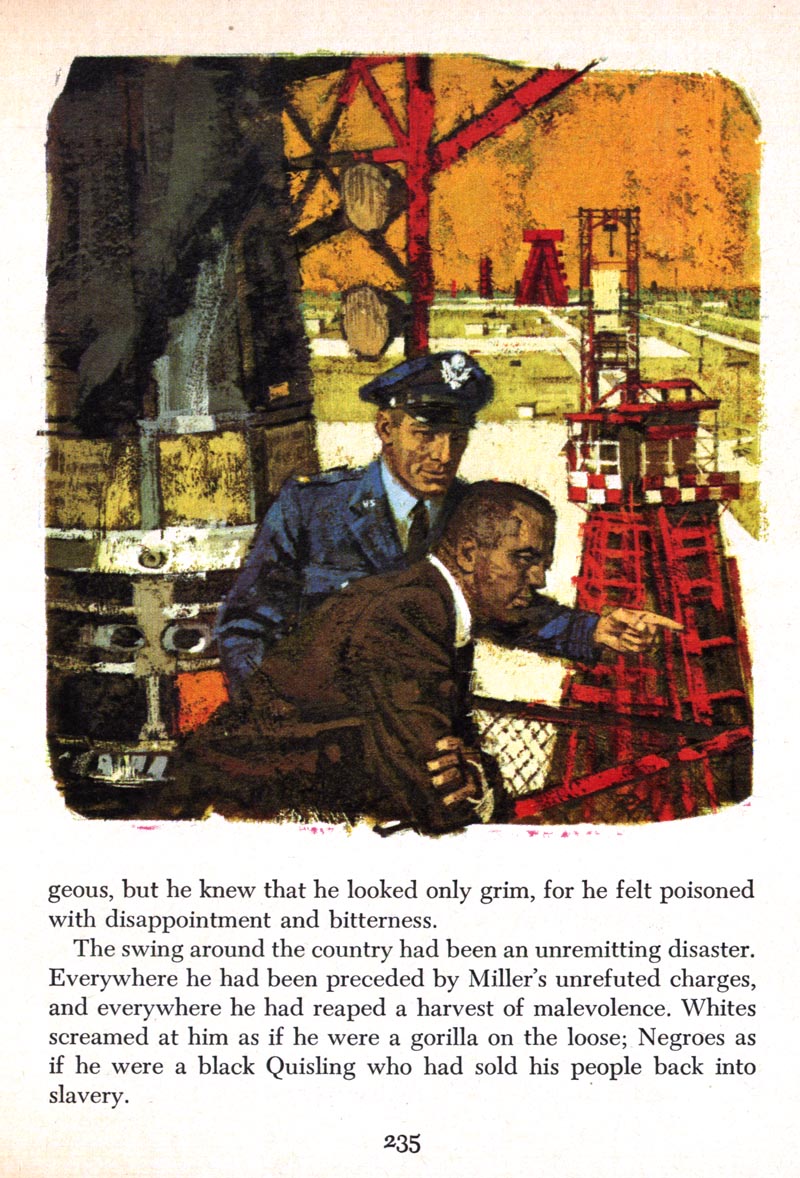
"President Douglass Dilman's presidency is marked by white racists, black political activists, and an attempted assassination."
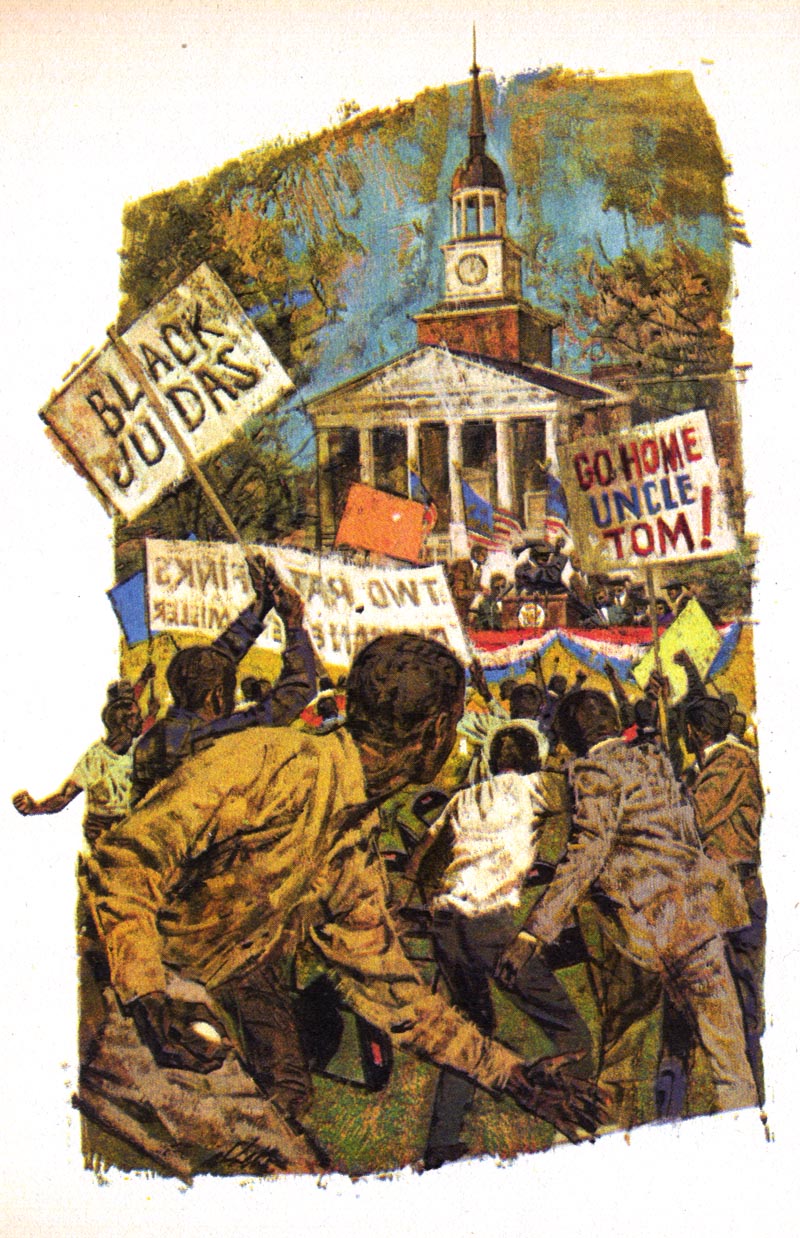
"Later, he is impeached on false charges for firing the United States Secretary of State."
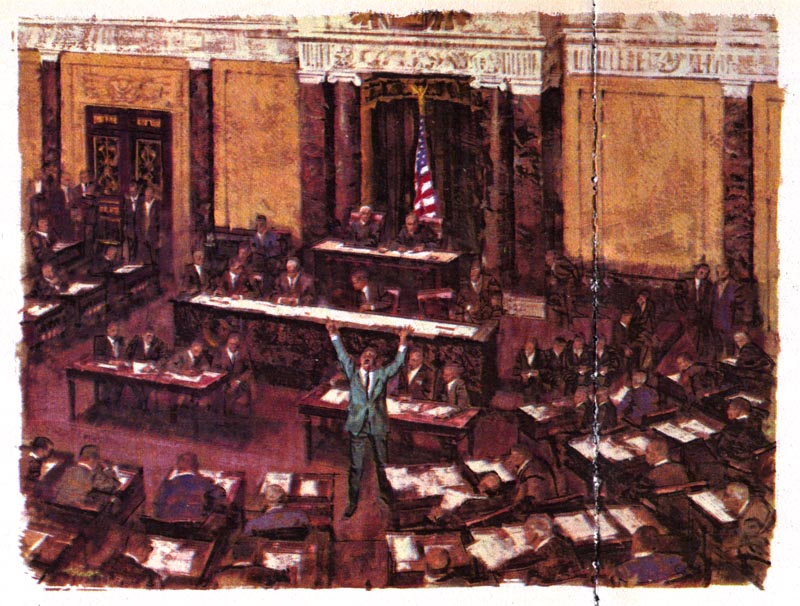
"Moreover, racially, one of his children, "passing" for white, also is targeted and harassed."
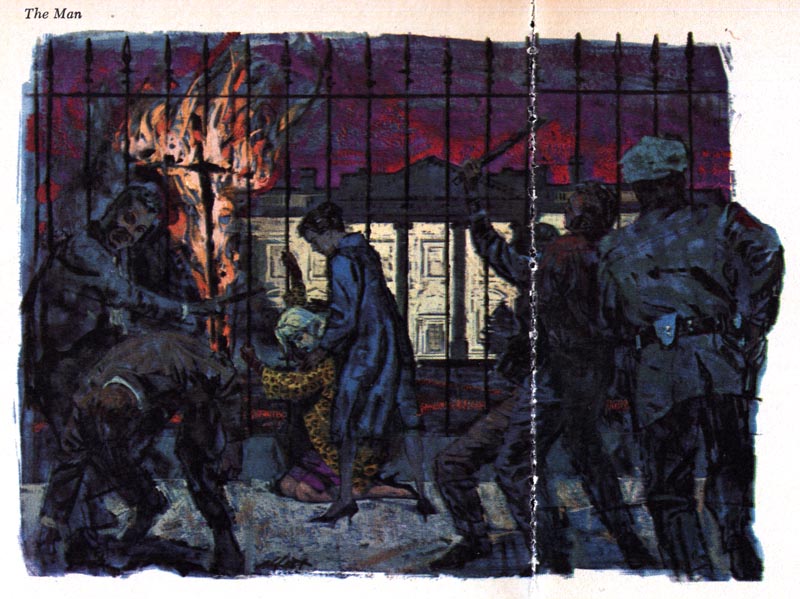
*Whew!* The kicker was discovering that "The Man" was adapted into a film in 1972 with a screenplay written by Rod Serling -- as if to suggest that the story of an African American becoming President could only happen in the Twilight Zone!
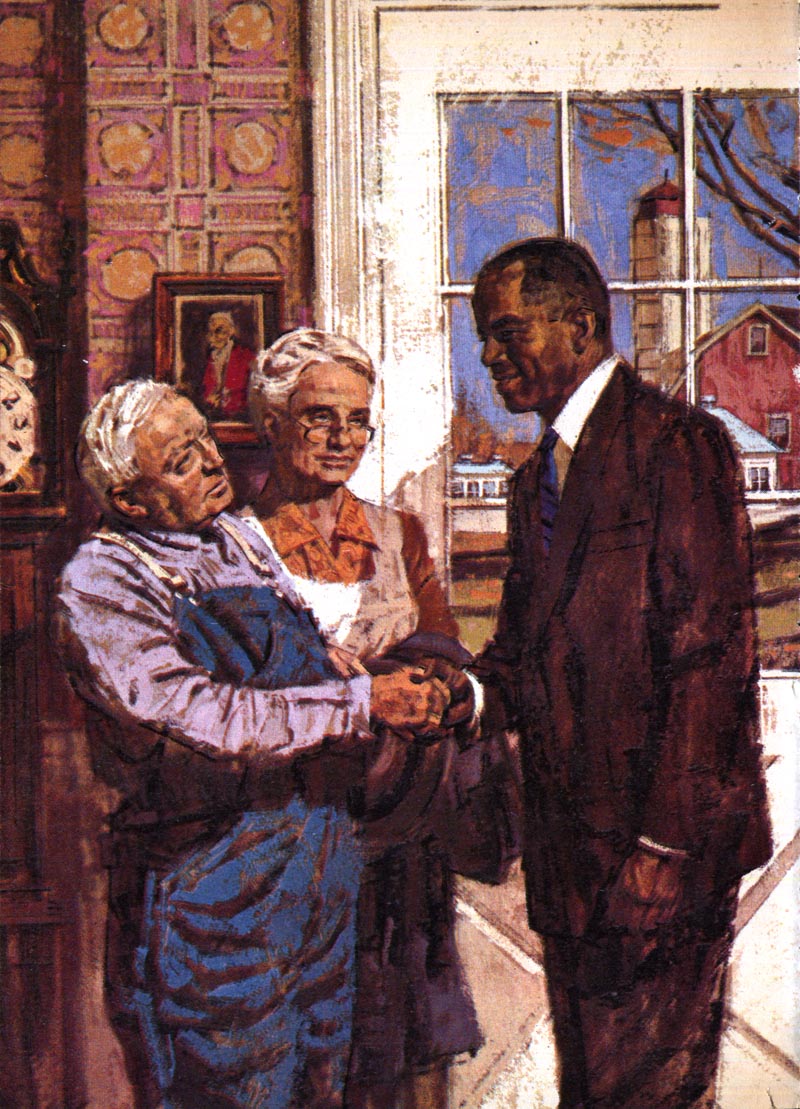
Well, whatever artistic or historical merit "The Man" may (or may not) have, we are certainly fortunate that the editors at Reader's Digest saw in Bob Abbett a capable and inspired artist, one who could illustrate this story with dignity and acuity.
There is, of course, much more to the Bob Abbett story. You can discover it for yourself on his website.
* My Bob Abbett Flickr set.
The name Bob Abbett seemed familiar to me, but I didn't remember why until I went to his web site. Then I recalled that I found a paperback he illustrated last year in a massive old second hand store. Really good stuff.
ReplyDeleteWhat a great post! I've owned quite a few Abbett pieces over the years and can never seem have enough of them. The expression in his brushstrokes wrings emotion out of every piece he created.
ReplyDeleteLeif, you are finding excellent examples of those very solid illustrators like Blossom and Abbett, that just never got the recognition they should have, in my opinion. Whitmore, Peak, Fuchs, Weaver, Hays, later Mark English and others, just dominated the avante-garde market with their dynamic innovative approaches, and I guess there wasn't a lot of room left under that spotlight. I always liked Abbett and Blossom's painterly technique a lot, and I don't recall either of them radically changing their technique from one illustration to another. They seemed to have found their market that fit their style, rather than the other way around. It seemed to have worked well for them. Anyway, it shows more top quality inspirational illustration, back then.
ReplyDeleteTom Watson
I love Abbett's stuff. There seems a connection to Tissot. Not just the need to place a figure in the correct background, both used casual brushstrokes to create very convincing worlds.
ReplyDeleteI thought it was genius for Ballantine to hire Bob Abbett to follow the very graphic Richard Powers on the ERB titles.
Heritage has an Abbett Mars painting on their site. A Thuvia piece that was rejected as too risque:
http://fineart.ha.com/common/view_item.php?Sale_No=5034&Lot_No=87027&src=pr#
or:
http://tinyurl.com/yczvlxq
Thank God for Readers Digest.I never thought I'd be saying that,but those condensed novels are turning out to be an essential archive of this generation of illustrators.
ReplyDeleteI kind of knew Abbett's country life stuff,but never knew he'd done this kind of thing.Wow.For me, he goes straight in next to William A Smith.What i particularly like about these artists are the strong figure compositions and the realism that doesnt look like a copied reference photo- which you so often see.Also, color is tastefully handled and nice use of values.
Definitely one to know.
LP--Nice going on the ABBETT post.
ReplyDeleteFor collectors of my generation, Abbett's covers for the first wave of Martian novels back in the early sixties are a holy grail.
The guy was fantastic--but got lost in the shuffle when compared to the much more crowd pleasing and overly obvious Frank Frazetta stuff for Ace.
Now that I know about it, I'll have a look at the Heritage Thuvia piece.
And if you're talking about finding giants among the lesser known, consider the work of HARRY BECKHOFF, a brilliant, grossly underrated talent whose career stretched from the 20s to the 70s.
Many thanks, as always.
HVC
Actually, Rod Serling didn't only write science fiction. He was a prolific TV and movie writer in various genres. For example, he wrote the "golden age" TV classic drama REQUIEM FOR A HEAVYWEIGHT.
ReplyDeleteUm, yes Karl, that was just a little joke.
ReplyDeleteAlways fine reading, from guest contributors as well, beside all these great illustrations.
ReplyDeleteWhat you are saying about that "otherwise forbidding scene, deliciously inviting" though...that reminds me of Renoir. He was once looking at a fierce battle scene painted by Delacroix, the great master of color. "I see a flower arrangement there!" Renoir said.
I cannot thank you enough for posting these illustrations! For me he crystallized the mood and atmosphere of Ballantines publication of ERB's Martian series. Even after 40 years of looking at those covers in my collection I never get tired of them. I was giddy with joy when I saw the Thuvia painting for auction at Heritage (though bidding was light years out of my league)! To be able to see the entire painting up close was an almost religious experience! If I had one handful of books to save from my burning house it would be the Martian series hands down!
ReplyDeleteI'm certain someone has already mentioned this but his style is reminiscent of the great AUSTIN BRIGGS.
ReplyDelete